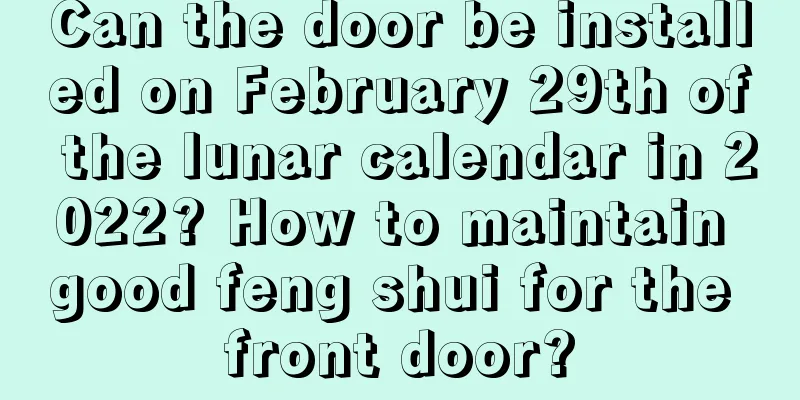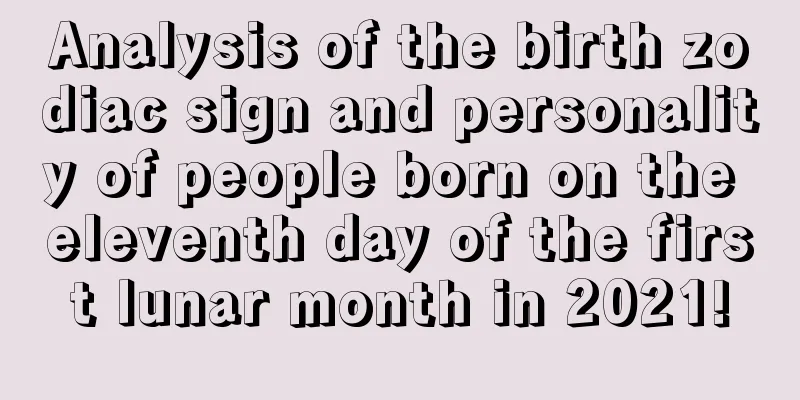What are the sayings and customs related to the Winter Solstice?

Time has unknowingly come to the last month of 2017. In this cold winter month, we are about to usher in the 22nd solar term among the 24 solar terms in my country - the Winter Solstice. I believe everyone is familiar with the Winter Solstice. In Chinese tradition, the Winter Solstice is also a relatively important festival. There is even a saying that "the Winter Solstice is as important as the New Year." However, the degree of importance it attaches to the festival varies depending on the time and place, and different places also have different customs and practices. Let’s talk about the winter solstice.Origin of Winter SolsticeIn astronomy, the winter solstice is the day with the shortest daylight in countries in the Northern Hemisphere and the day when the sun is closest to the earth. After the winter solstice, we are about to officially enter the cold winter and be baptized by the cold winter wind, so everyone should pay more attention to their health, and dress in a way that warms the stomach, and never "give up temperature but prefer style".According to legend, the origin of the Winter Solstice was a major capital city planning. Today, we have to marvel at the wisdom of the ancients. It dates back to more than 3,000 years ago when Duke Zhou began to use the gnomon method to measure shadows. He measured the center of the world in the city of "Luoyi", the predecessor of Luoyang, and called it Tuzhong. It was this action by chance that became the basis of the Winter Solstice Day that has been passed down to this day. Customs of the Winter SolsticeThe Winter Solstice is one of the 24 solar terms in China. It is also known as the Winter Festival and the beginning of winter. Since the Zhou Dynasty, people have held sacrificial activities in the ancient palace and among the people in order to pray for peace and prosperity in the country and family harmony. Later, people began to particularly respect the Winter Solstice, and the saying "The Winter Solstice is as important as the New Year" also comes from this.The literati and scholars in ancient China were particularly particular about the winter solstice. After the ninth day of the winter solstice, literati and scholar-officials would hold activities to get rid of the cold. The so-called "Xiao Jiu" means nine good friends get together to drink, and nine dishes and nine bowls are placed on the table. Because nine and wine have the same pronunciation, it has the meaning of "Xiao Jiu". Winter Solstice Food CustomsIn ancient China, wealthy families in southern China would visit the graves on the Winter Solstice . After visiting the graves, they would distribute "zao meat" to people of the same clan.There are also some rules for distribution. In principle, it is distributed according to the level of education. The more educated the family is, the more "zao meat" they will get as an encouragement. Special care is also taken for the elderly. If there are elderly people in the family, the meat will be distributed according to their age. The older the family is, the more "zao meat" they will get. Pinching the frozen ears In fact, the frozen ears here are what most people call dumplings. Frozen ears is the common name for dumplings. The origin of dumplings is that after the ancient medical saint Zhang Zhongjing retired and returned to his hometown, he saw that the villagers were poorly dressed and suffering from the cold, some of whom had their ears frozen. So he asked his disciples to prepare mutton and some cold-relieving herbs, then wrap them into dumplings with dough and distribute them to the villagers. After recovering from their illness, the villagers loved this food very much, so every winter solstice they would imitate it and make it, and the tradition has been passed down to this day. Eating glutinous rice balls has a long history in China. It was especially popular in the south of the Yangtze River in the old days. It is also one of the famous winter solstice food customs in China. There is even a saying among the people that "eating glutinous rice balls makes you one year older." Eating glutinous rice balls during the winter solstice is also called "winter solstice dumplings". They can not only be used for sacrifices, but also can be given to relatives and friends. However, nowadays, with the development of social industry, glutinous rice balls are no longer a rare food and can be eaten all year round. Winemaking Hakka people believe that the winter solstice is the best time to make wine. The wine brewed at this time has a strong aroma and an endless aftertaste, and can be stored for a long time without spoiling. Therefore, winemaking at the winter solstice has become a Hakka custom today. The custom of eating red bean glutinous rice originated in the water towns of the south of the Yangtze River. It is a blessing in life for families to gather together during the winter solstice and share delicious glutinous rice. The origin of eating red bean glutinous rice is said to be that in ancient times there was a man named Gonggong whose son was a wicked man and died on the day of the winter solstice. In order to prevent his son from continuing to wreak havoc on the world and harming the people, people cook and eat red bean glutinous rice on this day to eliminate the disaster. Winter Solstice Farming Arrangementsmy country has a vast land and abundant resources, so the temperature difference between the north and the south is too large. The winter solstice is usually a good time to accumulate fertilizer. After the winter solstice, it is midwinter and crops need to be protected from frost. In southern China, the Jiangnan region, known as a water town, must do a good job in clearing ditches and draining water, and cultivating the soil and roots. We must hurry up and plow the unplowed winter fields to loosen the soil, increase its water storage capacity, and do a good job of eliminating overwintering pests. In some coastal areas in the south, the winter solstice is suitable for spring planting. It is necessary to strengthen the nutritional management of the seedlings and cover them with straw for insulation. |
<<: What is the date of January 26th in the first lunar month of 2018? Is it an auspicious day?
Recommend
Is the third day of the eighth lunar month in 2021 suitable for starting renovations?
Chinese people attach great importance to the Feng...
Can the door be installed on the sixth day of the fourth lunar month in 2022? What kind of Feng Shui can a front door bring in wealth?
The fourth month of the lunar calendar is the firs...
Is January 5, 2021 a good day for moving? Auspicious days for moving in January 2021
Introduction: Moving is one of the important matte...
An inventory of traditional Christmas customs in different countries. Who is Santa Claus?
Christmas originated in Western countries, and Chr...
Is December 25th of the lunar calendar in 2019 an auspicious day for opening a business?
Is December 25th of the lunar calendar in 2019 an...
What holiday is on April 1, 2018? What's the lunar calendar date today?
Introduction: Every day unfolds differently, and d...
Is the fate of a girl born on Laba Festival in the Year of the Rat good? Will you become rich and powerful?
In fact, the day of birth is different for differe...
Is November 13th of the lunar calendar in 2017 a suitable day to open a business?
In the eleventh month of the lunar calendar, whet...
Who are the famous people who were born during the Spring Equinox? What are the precautions and considerations?
A lot of people are born every day, and many celeb...
When is Minor Cold? What are the customs in various parts of the country during the Minor Cold solar term in 2022?
Minor Cold, like Major Cold, Minor Heat, Major Hea...
Do pig babies born in the third month of the lunar calendar in 2019 have good fortune?
2019 is the year of the Pig. So how is the fortune...
What will be the fate of babies born between 7 and 9 p.m. on New Year’s Day 2022?
New Year’s Day is the New Year in most countries i...
Is it possible to get married on August 18th of the lunar calendar in 2018?
As the eighth month of the lunar calendar arrives...
What is the fate of girls born in the year of Xiaonian in 2019?
Xiaonian is a traditional festival of the Chinese....
Can I pick up the car on February 24th of the lunar calendar in 2022? How to choose an auspicious day to pick up the car?
February is the middle of spring, so it is also ca...









